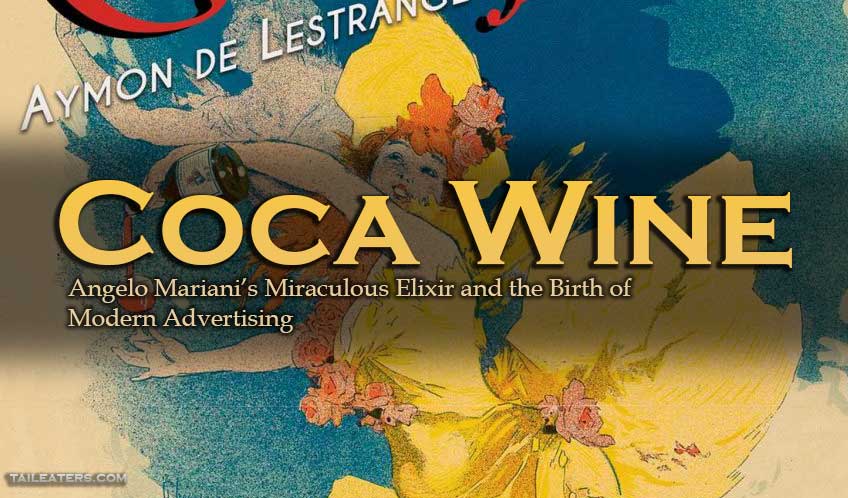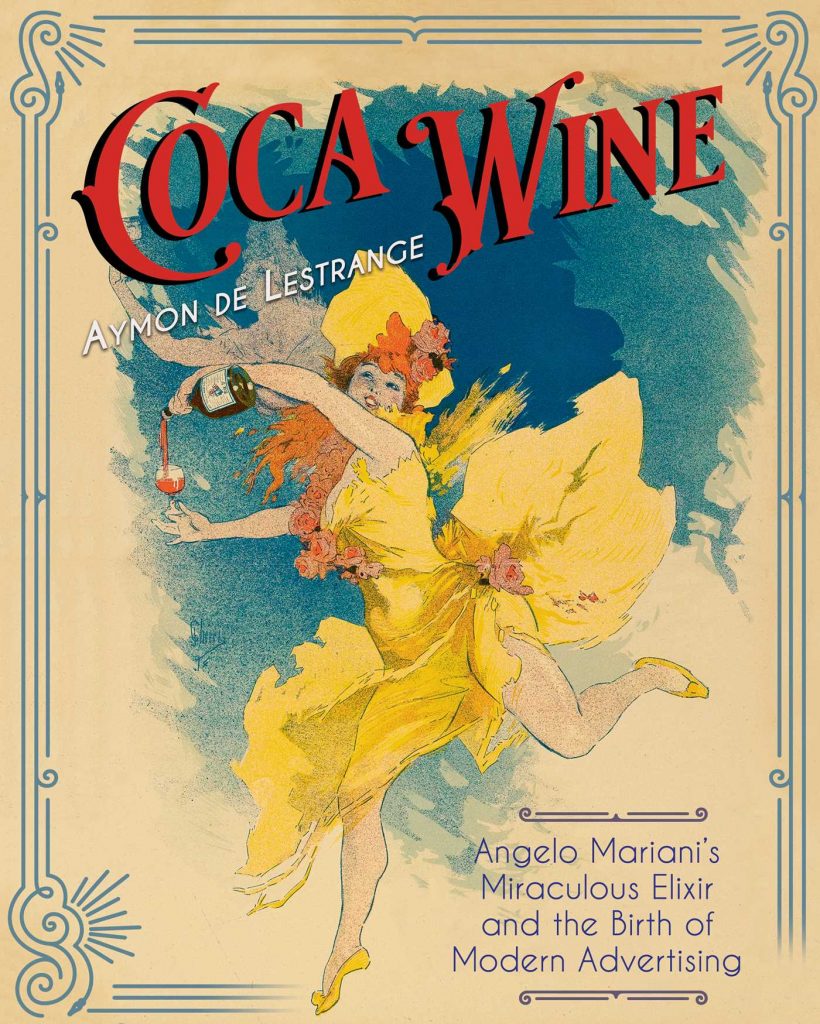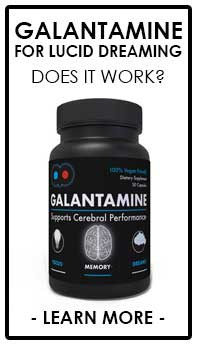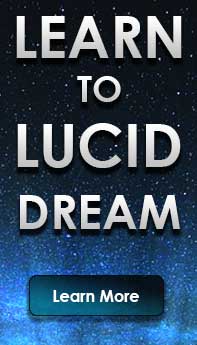
Coca Wine
“There was nothing of the charlatan in this launcher of a unique business, who was the first to believe in it, and for an advertisement was happy with the portrait and autograph of his friends. Nor was he a patron who was changed by money. No presumption or bragging—no swollen ego. Toward the things of the mind, he felt, he professed, a kind of timid reverence. He worshiped beauty, and had respect for art and artists. He did not protect them (as protection involves an element of humiliation), but helped them fraternally…because it was his goodness that was the secret of his prestige, of his real influence. It is by goodness that he reigned, and he will remain immortal in the hearts of those who knew him.” — Séverine in Coca Wine, (p. 23-24)
 Aymon de Lestrange’s Coca Wine is primarily a chronicle of the miraculous healing elixir, Vin Mariani; tracing its history, components, interesting creator, and eventual fall from grace. Coca Wine details the original uses of coca in indigenous cultures and its recent revival in South America as well as the eventual rise of decocainized coca: cocaine. In so doing, it draws a critical distinction between the healing properties of the sacred herb of the Incas, its nonaddictive uses in coca wine elixirs, and the chemically adulterated and highly addictive version, cocaine. This was eye-opening and challenged my preconceived beliefs about the sacred coca plant.
Aymon de Lestrange’s Coca Wine is primarily a chronicle of the miraculous healing elixir, Vin Mariani; tracing its history, components, interesting creator, and eventual fall from grace. Coca Wine details the original uses of coca in indigenous cultures and its recent revival in South America as well as the eventual rise of decocainized coca: cocaine. In so doing, it draws a critical distinction between the healing properties of the sacred herb of the Incas, its nonaddictive uses in coca wine elixirs, and the chemically adulterated and highly addictive version, cocaine. This was eye-opening and challenged my preconceived beliefs about the sacred coca plant.
Angelo Mariani, Creator of Coca Wine
Coca Wine chronicles the history of coca and its use in healing elixirs through the life and many innovative methods of Angelo Mariani who, around 1866, made the first concoction of what later became known throughout the Western world as Vin Mariani. The coca wine creation involved grinding 60 grams of coca leaves, which were then percolated and dissolved in brandy. This was added to Bordeaux wine for its flavor, iron content, and for the general properties of alcohol. Glycerin and 6% sugar were added, yielding a product with 14% to 17% alcohol content. In terms of active alkaloids, also known as cocaine, Mariani’s most famous coca wine product contained about .025% alkaloid content, an amount which was therapeutic and nonaddictive.
Mariani’s first patient was an opera singer whose voice he cured with the coca wine elixir and its anesthetic properties. As he attracted other patients the number of ailments treated grew rapidly and diversified as though nobody knew how else it might benefit. Among these were a range of disorders like depression, fatigue, influenza, poor appetite, respiratory problems, inflammation, weak hearts, indigestion, poor nervous system functioning, and anemia.
Other curative applications seen through Coca Wine included curing addictions, primarily alcoholism and opium. Athletes used it for heightened sports performance and generals used it on some small scale for supporting long military campaigns. Mariani’s coca wine elixir also reached many famous patients, including President Grant; Vin Mariani was widely credited at the time with prolonging Grant’s life and enabling time to finish his memoirs. Among others were Sigmund Freud, Jules Verne, and an extensive list of artists, physicians, and even several European monarchs who benefited from Vin Mariani.
Mariani’s Many Methods of Advertising
Lestrange goes into painstaking detail in Coca Wine, combined with original pictures showing Mariani’s characteristic artistic style, of how Mariani found success through highly innovative advertising. These methods were so innovative that he refers to Mariani as the Father of Modern Advertising. Early on Mariani found support from doctors and patients because of the quality of his curative coca wine elixir. Mariani’s intuition was that he could approach anyone, ask for a testimonial without recompense, and they would give it freely because of the superb quality of his product.
“Since a single bottle of the extraordinary Vin Mariani is enough to ensure you a hundred years of existence, I’ll be alive until 2700! Well, I have no objection!” — Jules Verne in Coca Wine, p. 94
Although Mariani’s advertisements were artistic and beautiful, he ensured they were only true forms of advertising, rather than containing falsehoods. Coca Wine shows advertising in the USA was “brutally Americanized” by contrast, with dishonesty soon a common practice. Mariani went further by using every advertising avenue imaginable including postcards, books, fictional stories with the coca wine Vin Mariani playing a heroic role; as well as posters, menus, medals, and even a play.
Another altruistic aspect of Mariani portrayed in Coca Wine was his proclivity for hosting parties filled with lavish foods. The main purpose, however, was soliciting donations for an orphanage from his wealthy guests. In this Lestrange continues a regular pattern in Coca Wine showing Mariani as a kind of paragon emphasizing altruism at every turn.
Aymon de Lestrange has degrees in literature and history. He served as an Information Officer at the United Nations Information Center and Cultural Attaché at the French Embassy in Lima, Peru. A bibliophile, publisher, and collector, he is well-known for his important collection of drug-related items, including the most comprehensive collection on Angelo Mariani and coca items in the world. He lives in Paris, France.
The Coca Wine Copycats Emerge
As Mariani’s coca wine concoction caught on and quickly became the most popular in the world, a bevy of competitors arose. Many of these competitors are shown in Coca Wine to have a far more bitter taste, some added chemicals, and they generally diluted the product by adding other ingredients. Among these were the Kola nut as well as caffeine, guarana, cinchona, cocoa, sugar, and curacao. In the United States this copying took a pernicious turn, as companies started to specifically added pure cocaine and some decocainized the coca leaf. All of these created diluted forms of coca wine and made it addictive in ways Vin Mariani never was, since coca leaf was never addictive on its own, in any quantity.
One of the most interesting parts of Coca Wine is discussed through the little known copycat Coca Cola. Coca Cola, we can see, was one of many earlier copiers of Vin Mariani, quickly becoming an increasingly sugar and chemically-adulterated version of coca wine. Coca Wine thus shows the pernicious beginnings of a beverage that has only recently been understood to be extremely unhealthy. Ironically, the original coca wine contained coca leaf, in contrast to Coca Cola’s initial ingredient of cocaine and later sugar and caffeine.
A Leaf and a Chemical
One of the most educational aspects of Coca Wine is the critically important distinction between coca, the pure natural form, and the processed and chemically-altered cocaine–the alkaloid present in coca. Lestrange finds, citing recent research of the coca family of plants, that there is no evidence of any addictive or harmful potential in any quantity of coca consumed naturally. Cocaine, in contrast, is highly addictive. With Coca Wine an eye opening illustration of the United States’ birthing of a chemical-emphasis of pharmaceutical medicine, Lestrange demonstrates the beginning of cocaine addiction as occurring only after pure cocaine, rather than coca leaf, started appearing in coca wine elixirs and medicines; eventually cocaine reached the streets and grew into an addiction epidemic among urban laborers.
Final Deathblow and Revival
Mariani eventually decocainized his coca wine beverage in the United States, but a continued concerted effort by various state and Federal regulators to specifically target anyone utilizing natural coca leaf led to an ongoing decline in Vin Mariani’s use. This trend followed in France towards the 1920’s and 30’s. Vin Mariani as the original coca wine thus passed into history, replaced by imitators that had long lost all medicinal value.
Although coca leaf and by proxy coca wine remain illegal throughout most of the world, a small revival is occurring. In closing pages of Coca Wine we see how Bolivia has slowly grown a trade in natural coca leaf based products, while simultaneously cracking down on coca leaf production used to distill cocaine. Although the revival has been slow and the regulatory obstacles many, the trend remains that a more original, indigenous form of coca leaf production and use is growing. One company, Babco Europe, has even started making a Vin Mariani-esque coca wine which they claim was replicated to be as close as possible to the original recipe, except:
“With a difference of course: the coca leaves used are decocainized.” — Aymon de Lestrange, p. 191.
Angelo Mariani as the Coca Wine Hero
Lestrange’s portrayal of Mariani in Coca Wine is as luminary who acted in almost every manner with selflessness, which resonated with the Hero’s Journey. The characteristics of Mariani hearkened to one transformation of the Hero into a kind of selfless healer of the sick. Mariani, through many acts of kindness and purity of his products, is portrayed as someone not self-interested but in honest improvement of humanity’s well-being. Coca Wine shows how Mariani channeled his selflessness into creating innovative methods that have set an ethical and innovative standard for medicine and advertising compared to our current pervasive forms. Although the United States and later the rest of the world effectively destroyed Mariani’s coca wine creation through regulation, Mariani stayed true to his original idea until his death in 1914. He lived his truth.
To the credit of Mariani’s life’s work, Coca Wine concludes by giving glimmers of hope that there may soon be a new revival of Vin Mariani true to Mariani’s original vision.
Andrew Haacke is a lifelong spiritual seeker who researches and writes about the Hero's Journey, symbolism, mythology, and psychedelics. He studied anthropology at the University of Utah and social work and public administration at the University of Southern California.
Join the Discussion
Want to discuss more about this topic and much more? Join our discussion group online and start exploring your consciousness with others like yourself.




Recent Comments